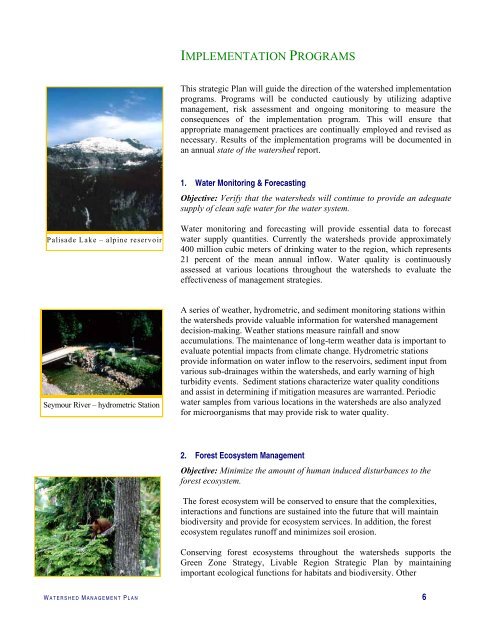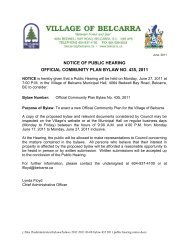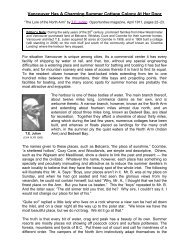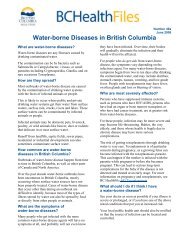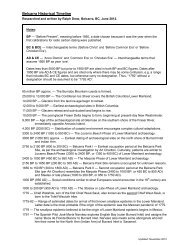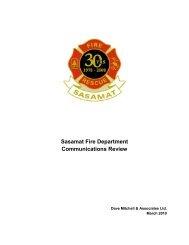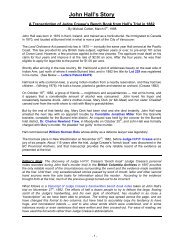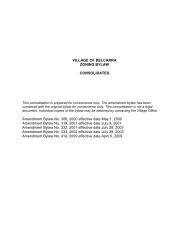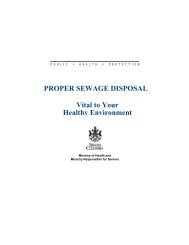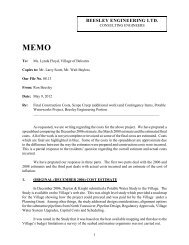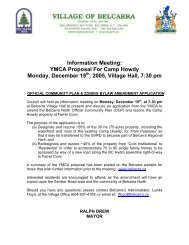Metro Vancouver's Watershed Management Plan
Metro Vancouver's Watershed Management Plan
Metro Vancouver's Watershed Management Plan
You also want an ePaper? Increase the reach of your titles
YUMPU automatically turns print PDFs into web optimized ePapers that Google loves.
IMPLEMENTATION PROGRAMS<br />
This strategic <strong>Plan</strong> will guide the direction of the watershed implementation<br />
programs. Programs will be conducted cautiously by utilizing adaptive<br />
management, risk assessment and ongoing monitoring to measure the<br />
consequences of the implementation program. This will ensure that<br />
appropriate management practices are continually employed and revised as<br />
necessary. Results of the implementation programs will be documented in<br />
an annual state of the watershed report.<br />
1. Water Monitoring & Forecasting<br />
Objective: Verify that the watersheds will continue to provide an adequate<br />
supply of clean safe water for the water system.<br />
Palisade Lake – alpine reservoir<br />
Water monitoring and forecasting will provide essential data to forecast<br />
water supply quantities. Currently the watersheds provide approximately<br />
400 million cubic meters of drinking water to the region, which represents<br />
21 percent of the mean annual inflow. Water quality is continuously<br />
assessed at various locations throughout the watersheds to evaluate the<br />
effectiveness of management strategies.<br />
Seymour River – hydrometric Station<br />
A series of weather, hydrometric, and sediment monitoring stations within<br />
the watersheds provide valuable information for watershed management<br />
decision-making. Weather stations measure rainfall and snow<br />
accumulations. The maintenance of long-term weather data is important to<br />
evaluate potential impacts from climate change. Hydrometric stations<br />
provide information on water inflow to the reservoirs, sediment input from<br />
various sub-drainages within the watersheds, and early warning of high<br />
turbidity events. Sediment stations characterize water quality conditions<br />
and assist in determining if mitigation measures are warranted. Periodic<br />
water samples from various locations in the watersheds are also analyzed<br />
for microorganisms that may provide risk to water quality.<br />
2. Forest Ecosystem <strong>Management</strong><br />
Objective: Minimize the amount of human induced disturbances to the<br />
forest ecosystem.<br />
The forest ecosystem will be conserved to ensure that the complexities,<br />
interactions and functions are sustained into the future that will maintain<br />
biodiversity and provide for ecosystem services. In addition, the forest<br />
ecosystem regulates runoff and minimizes soil erosion.<br />
Conserving forest ecosystems throughout the watersheds supports the<br />
Green Zone Strategy, Livable Region Strategic <strong>Plan</strong> by maintaining<br />
important ecological functions for habitats and biodiversity. Other<br />
W ATERSHED M ANAGEMENT P LAN 6


